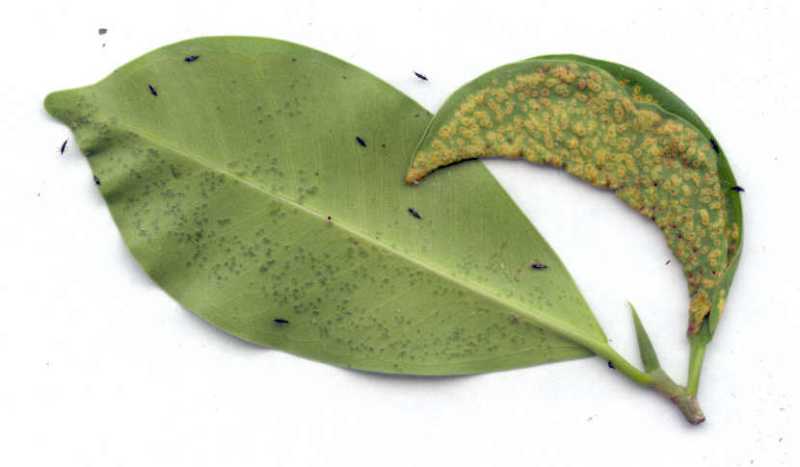 |
Cuban laurel thrips (Thysanoptera) on leaves of a weeping fig (Ficus benjamina) |
Thrips are small (1/5th inch), fringe-winged, pale-colored insects. Normally, they are responsible for negligible problems on houseplants, but plants in the Gesneriaceae family (African violet) and Commelinaceae family (Spiderwort) are prone to attack.
Symptoms and Diagnosis
Thrips are rarely seen because of their small size. The insects feed by puncturing the surface of the plant parts with their single large mandible and slurping the plant juices that seep from the wound. Flowers or leaves may develop silvery streaks. Heavily infested leaves appear brownish or silvery, and growing points may become contorted. Some species of thrips leave sooty spots of black fecal matter on the leaves. Thrips also vector plant diseases. Light blue cards coated with a thin film of oil suspended within two feet above indoor plants can be used as indicator traps. Winged adults caught on the card indicate the presence of thrips.
Life Cycle
Female thrips lay their eggs in tiny slits cut into the surface of leaves, flowers, and stems. The eggs can be laid any time of year and hatch within a few days in warm, indoor conditions. The young, called nymphs, are cream to pale green and only visible with magnification. They feed for 7–14 days. Fullgrown nymphs, in most species, drop off the plant to the soil where they burrow down and pupate. Winged adults emerge to complete the cycle.
Integrated Pest Management Strategies
1. Keep plants moist. Plants that are kept too dry are more likely to be damaged by thrips. To limit damage or reduce future damage after other initial control measures are used, keep plants moist and increase humidity.
2. Insecticidal soap. Insecticidal soaps, which are considered nontoxic to humans and pets, give good control. Be sure that flowers and growing tips are well covered with the spray. Frequent sprays may be needed until the problem is under control.
3. Use superior horticultural oil sprays. Highly refined oils sold as superior or horticultural oils will also control thrips. The oil suffocates the insects. These oils are highly refined and under proper conditions, can be applied to plants in foliage without damage. Follow label directions to avoid damage to some plants that may be sensitive. Superior oils are also considered nontoxic and are less likely to harm beneficial insects. When spraying indoors, protect surfaces that may be damaged by an oil residue.
4. Use chemical insecticides. Many insecticides registered for use indoors are available. Sprays containing pyrethrins, a plant-derived insecticide, are effective and more benign than other chemical pesticides. Follow label directions and, if possible, spray out-of-doors or in a garage, weather permitting.
5. To limit future problems, inspect plants regularly. With regular inspection, pest problems can be caught when just beginning and control is easier. It is also recommended to isolate newly acquired plants for 2–3 weeks to limit introducing pests indoors. Bringing plants indoors in the fall is another way of introducing insects indoors.
Organic Strategies
Strategies 1 and 5 are strictly organic approaches. For organic approaches to Strategies 2 and 4, consult the Organic Materials Review Institute (OMRI™) for appropriate insecticidal soap and pyrethrin products.
More images:
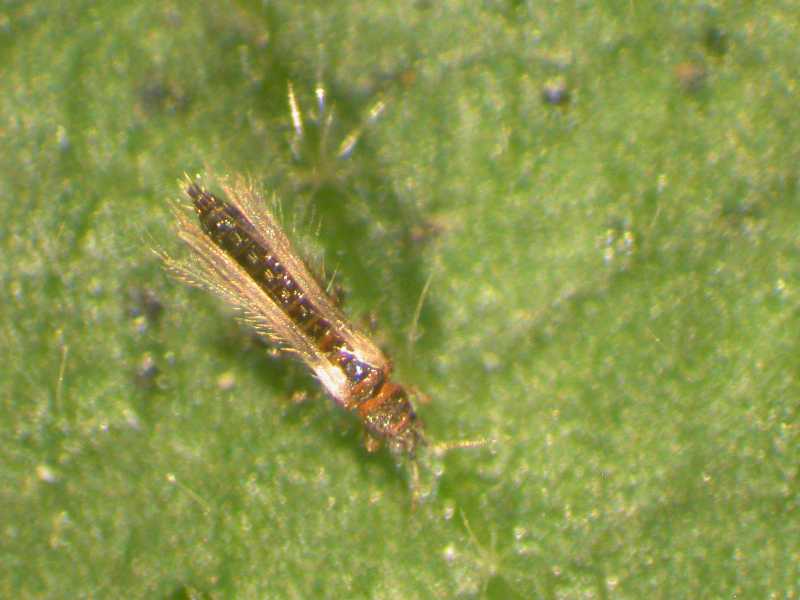 |
| Adult thrips (Thysanoptera) on flowering maple (Abutilon); note, fringed or feathery edge of wings |
|
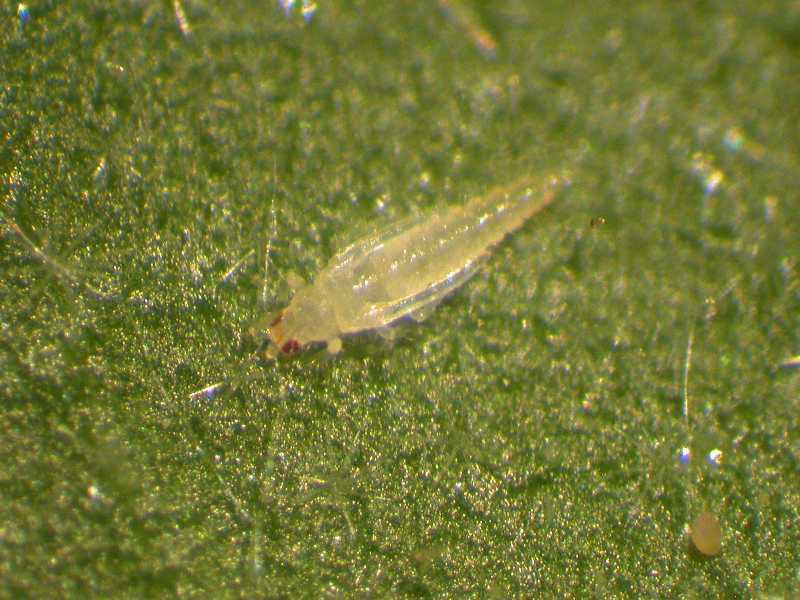 |
| Thrips pupa (Thysanoptera) on flowering maple (Abutilon); note, partially developed wings |
|
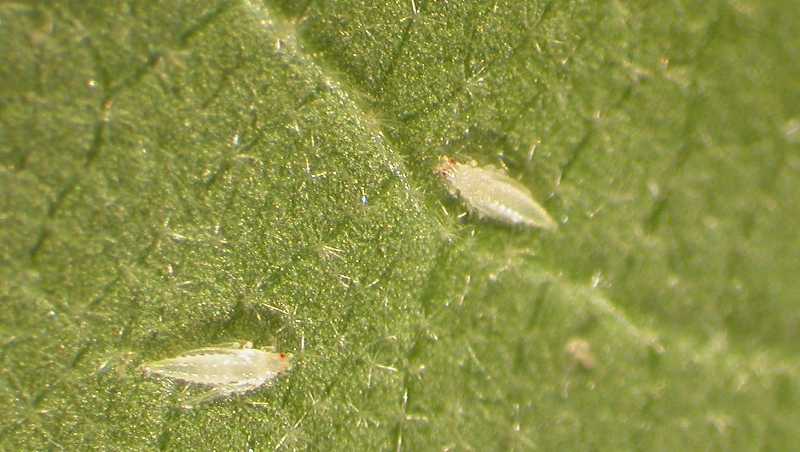 |
| Two thrips pupae (Thysanoptera) on flowering maple (Abutilon); note, partially developed wings |
|
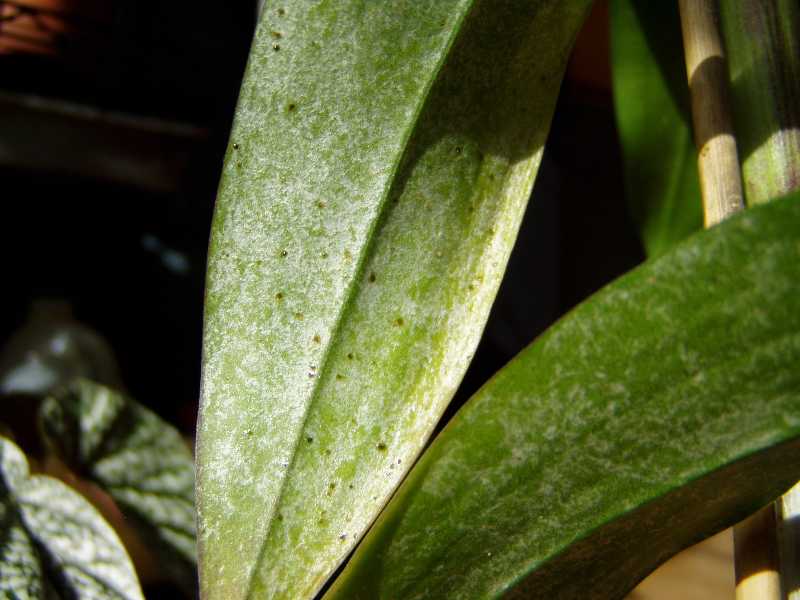 |
| Silver streaking on leaf of Dendrobium (group) orchid caused by rasping-sucking feeding of thrips (Thysanoptera) |
|
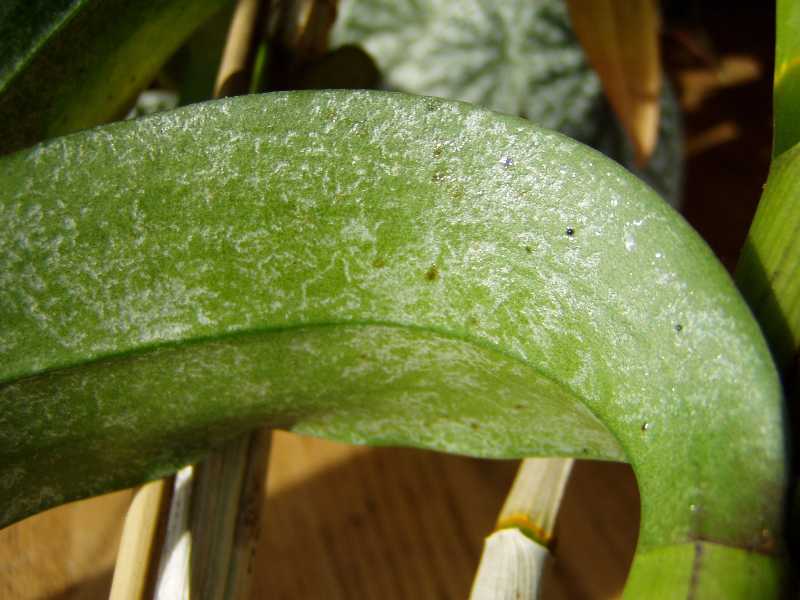 |
| Silver streaking on leaf of Dendrobium (group) orchid caused by rasping-sucking feeding of thrips (Thysanoptera) |
|
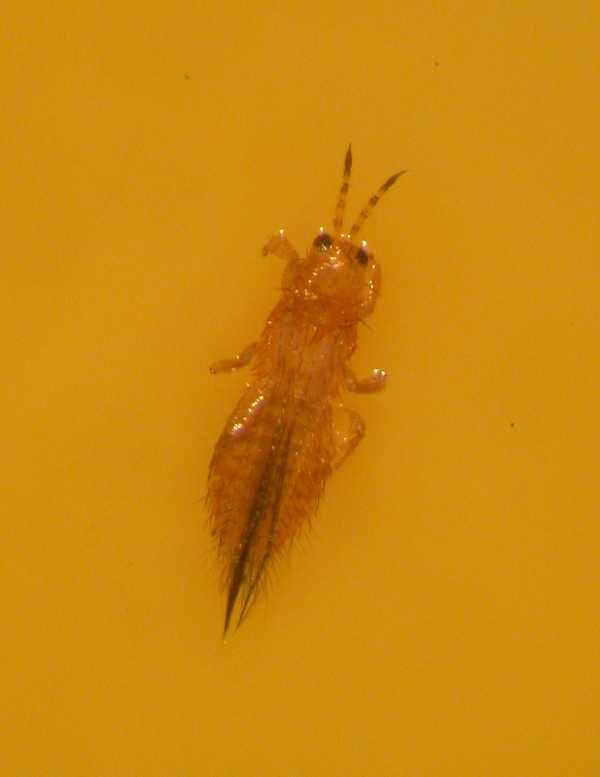 |
| Adult thrips (Thysanoptera) captured on a greenhouse yellow sticky trap |
|
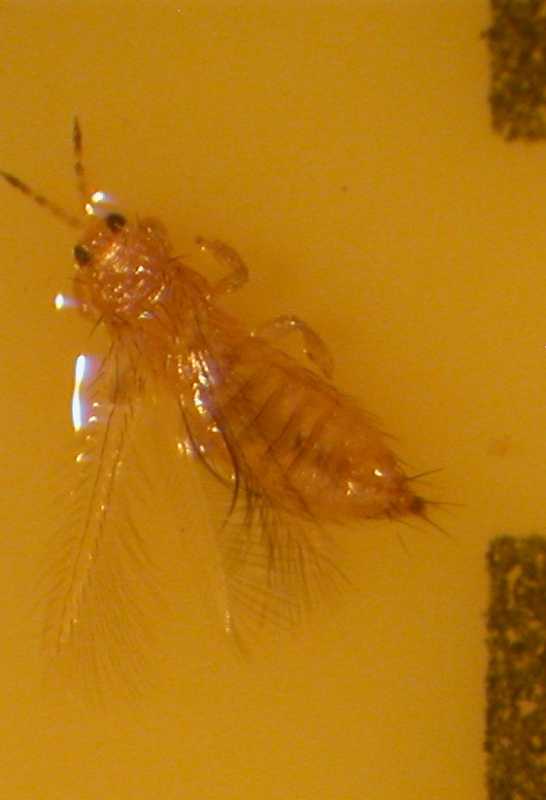 |
| Adult thrips (Thysanoptera) captured on a greenhouse yellow sticky trap; note, feathery wings |
|
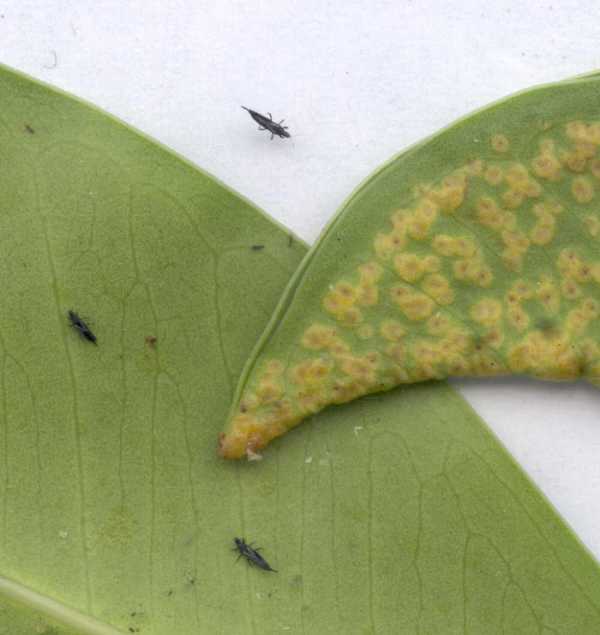 |
| Close-up of cuban laurel thrips (Thysanoptera) on leaves of a weeping fig (Ficus benjamina) |
|
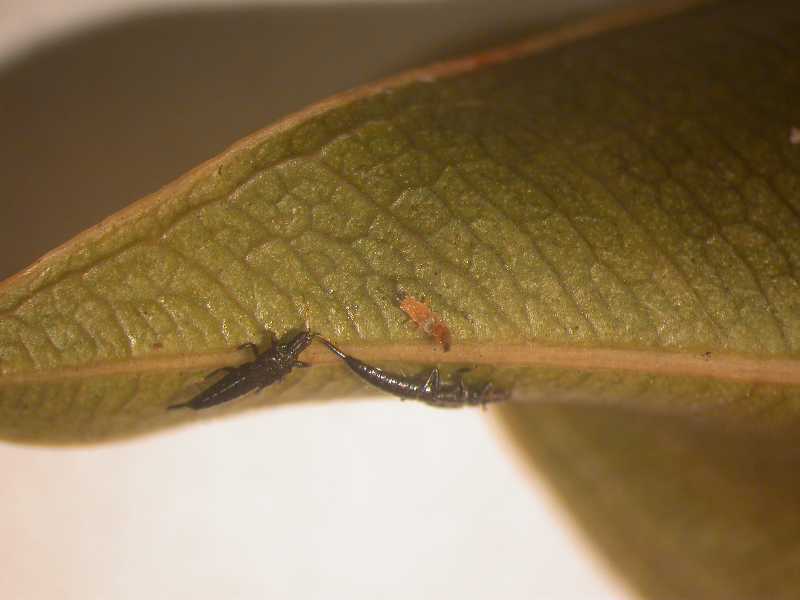 |
| Cuban laurel thrips (Thysanoptera); note, tube tail |
|
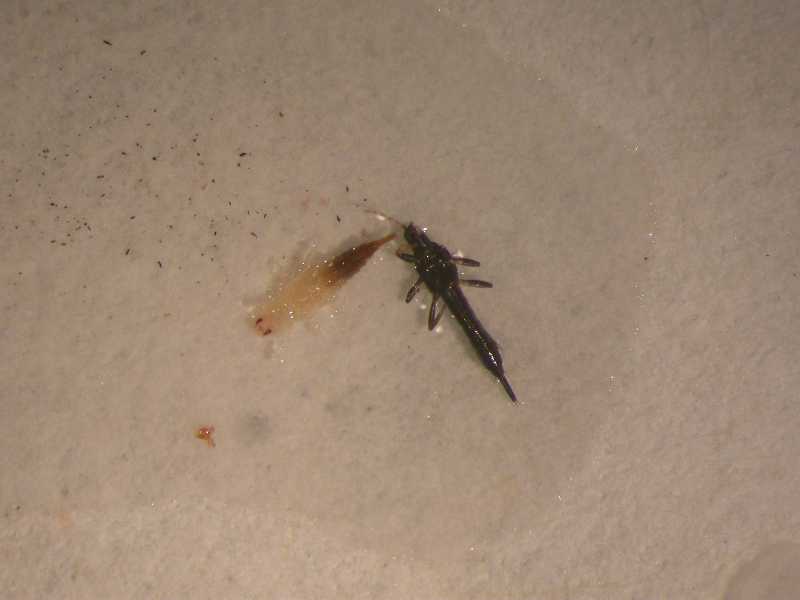 |
| Cuban laurel thrips (Thysanoptera) nymph and adult |
|
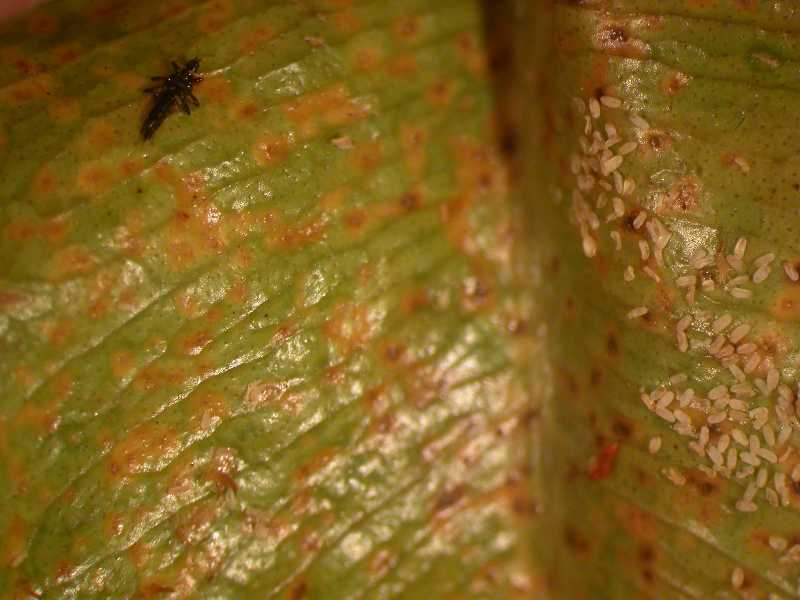 |
| Cuban laurel thrips (Thysanoptera) eggs and adult |
|
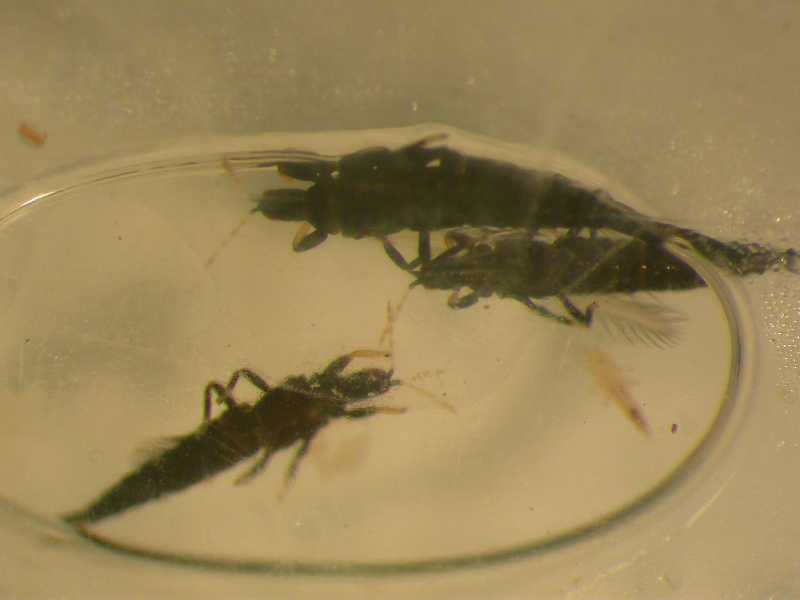 |
| Cuban laurel thrips (Thysanoptera); note feathery wing of adult |
|
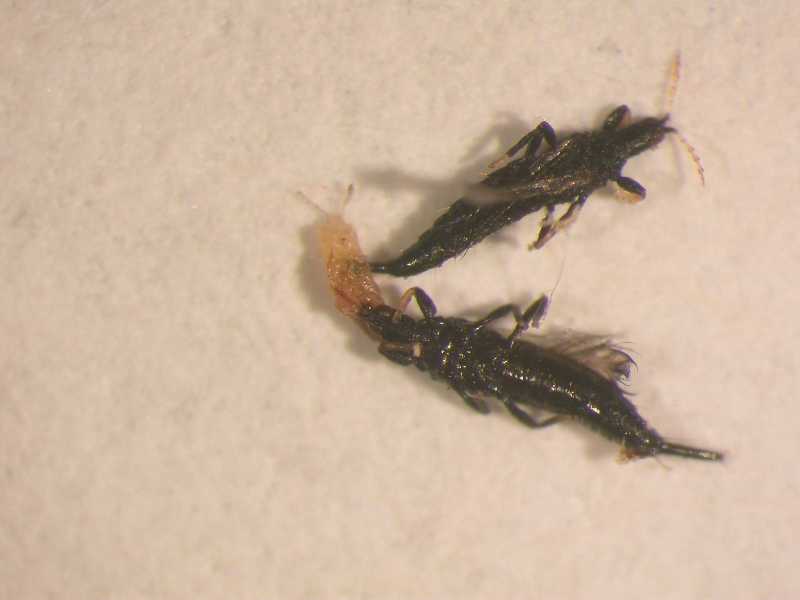 |
| Underside of Cuban laurel thrips (Thysanoptera) adult with portion of feathery wing |
|
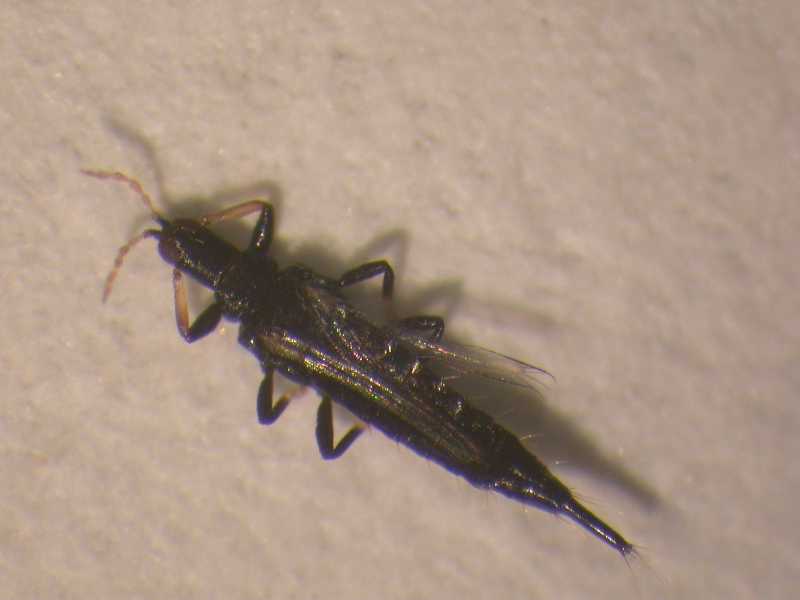 |
| Adult Cuban laurel thrips (Thysanoptera), a kind of tube-tailed thrips; note feathery wing and tube tail |
|
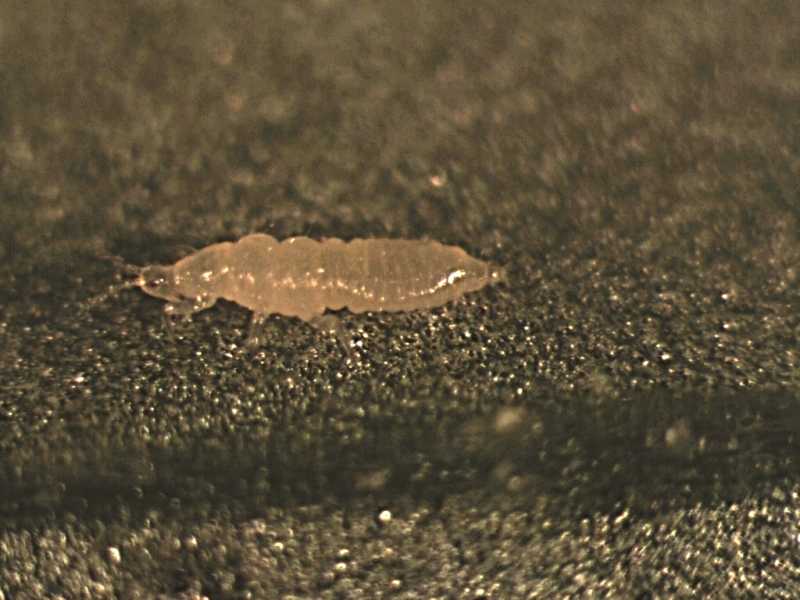 |
| Sideview of a thrips (Thysanoptera) on New Guinea impatiens (Impatiens hawkeri group) |
|
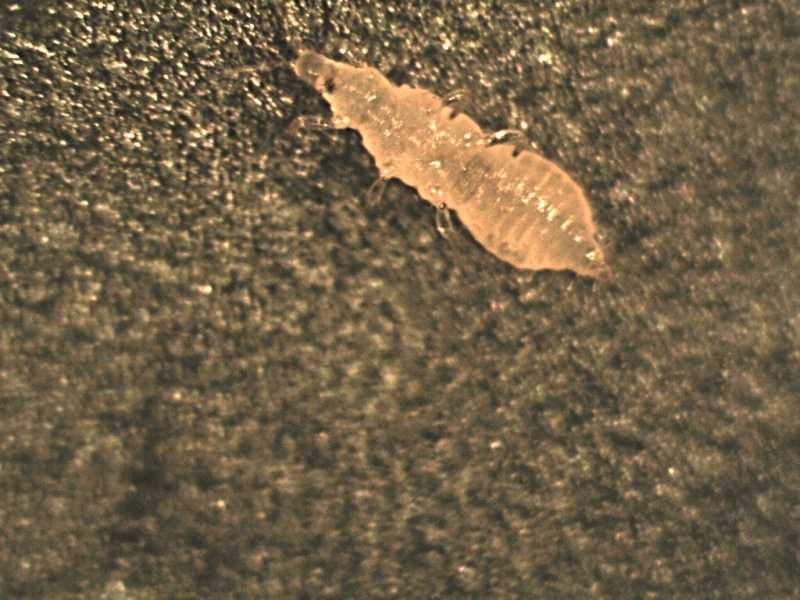 |
| Close-up of a thrips (Thysanoptera) on New Guinea impatiens (Impatiens hawkeri group) |
|
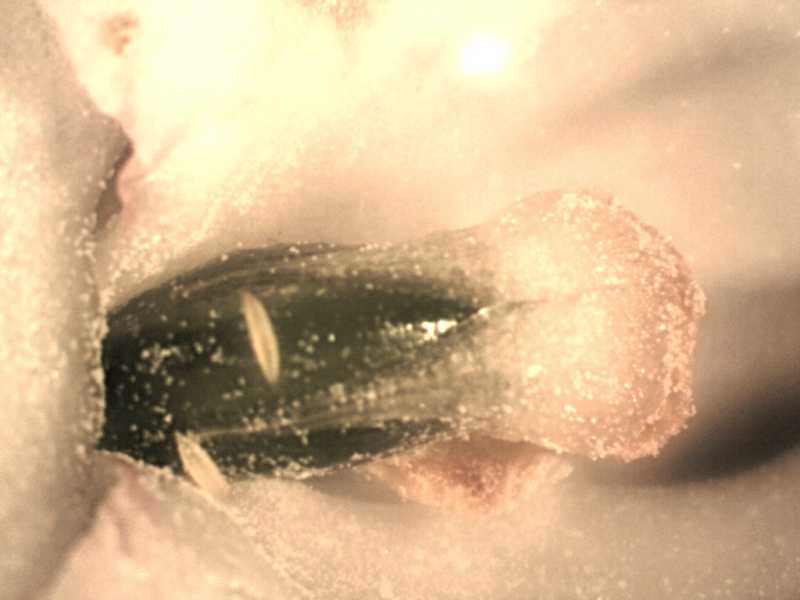 |
| Two thrips (Thysanoptera) on the pistil of a New Guinea impatiens flower (Impatiens hawkeri group) |
|
|